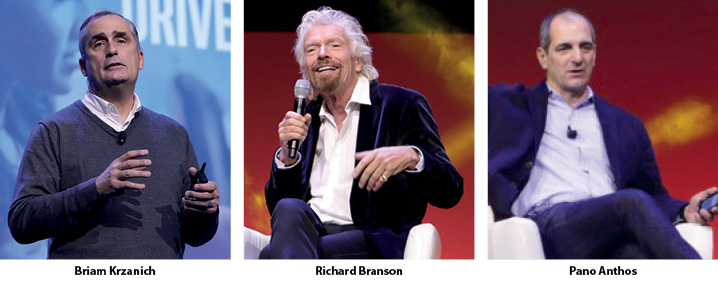
Bridging the physical and digital gap
The most influential people in the retail world were in New York from January 14-17 for the National Retail Federation’s (NRF) BIG Show 2017. The show may be over for the 35,000 attendees and 510 exhibitors representing 95 countries, the inspiration will certainly go a long way.
Lawrence Pinto brings an insider view of what the retail industry thinks and where it sees the customer-retailer relationship going in a post-omnichannel scenario.
Virtual reality creating new opportunities for retail
During his keynote, Brian Krzanich, CEO of Intel, stressed that companies should use connected devices to reinvent their in-store and online experiences, continuously collect customer data and act on the insights revealed to create highly individualised interactions for their customers. In doing so, they can create a “virtuous cycle,” that allows them to repeat successful processes easily.
Competitive companies can “predict what customers want, what they need, what they see, and what is most important to them,” he emphasises.
Personalisation takes centre stage
Personalisation is an increasingly crucial area for companies to focus on if they want to avoid being obsolete in today’s competitive retail landscape. In his remarks, Pano Anthos, founder and managing director of XRC labs, stressed just how important personalisation has become and urged companies to listen to customers and give them the freedom of choice rather than dictate their terms to them.
He pointed out that one reason Starbucks is so successful because it has taken a highly commoditised product, coffee beans, and appealed to the desire for personalisation. The result – it can charge $5 for a latte. Similarly, Walt Disney was known to spend months out of the year sleeping in his Disneyland apartment so that he’d be able to interact with customers. “Are we personalising enough?” he asks.
Adapting to industry change
According to the founder of the Virgin Group, Richard Branson, entrepreneurs are more willing to fail, stating: “People don’t mind people trying and failing as long as they don’t leave people with debt and they keep their reputation intact – I suppose we’ve had more successes than failures.”
Changing direction or adapting as a result of a failure can lead to huge successes, he said. With the retail industry shifting away from bricks-and-mortar and towards technology driven omnichannel, it’s more important than ever for retailers to be agile and embrace change.
Read the full article in the February 2017 edition of RetailME
Notifications